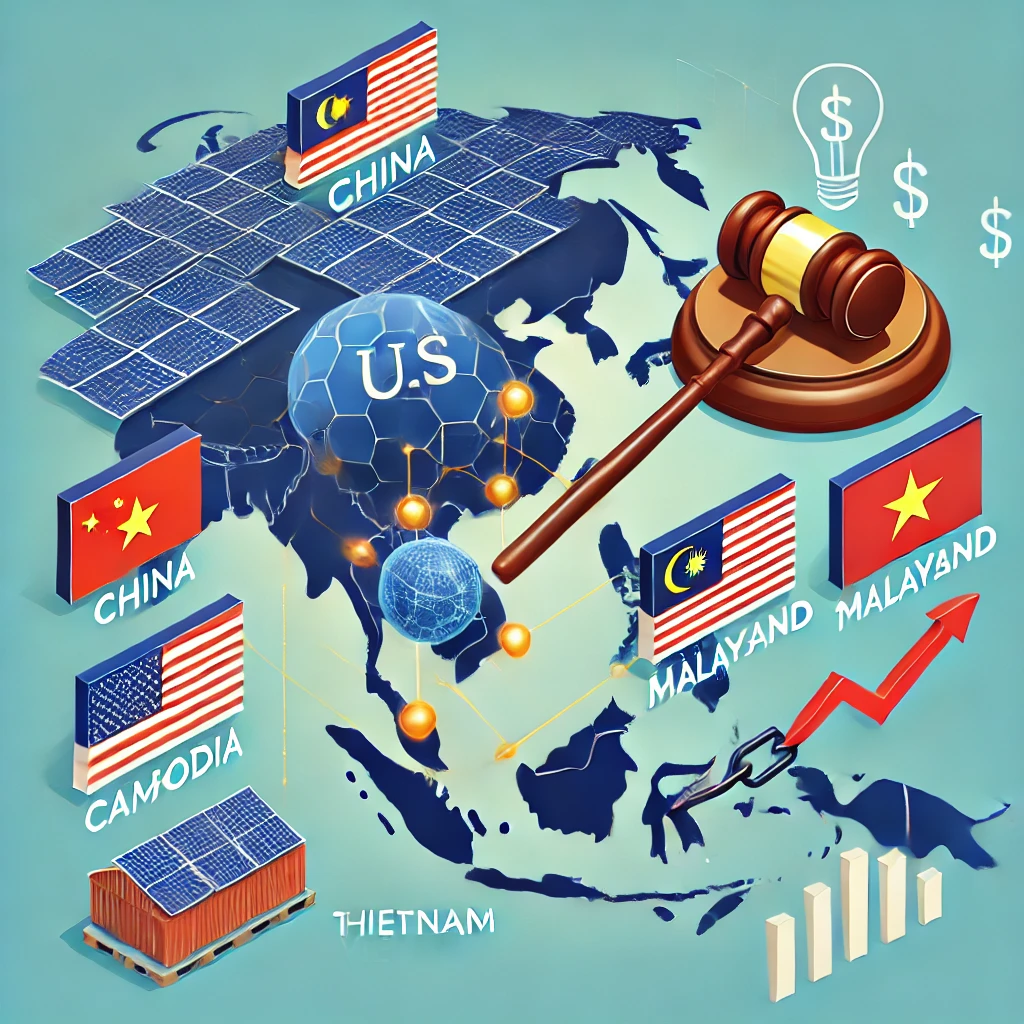Introduction
Recently, the US government announced new tariffs on solar panels imported from Cambodia, Malaysia, Thailand, and Vietnam. This policy has garnered widespread attention in the global solar market. For solar panel importers and distributors, it not only affects supply chains but may also reshape global market dynamics. As the world’s largest solar panel producer, China is actively adjusting its strategies to tackle these new challenges.http://REUTERS.COM
Impact of US New Tariffs
- Global Supply Chain Disruptions: The four Southeast Asian countries affected by the new tariffs are significant production hubs for Chinese solar companies. A large share of solar panels imported into the US comes from these regions. The new tariff policy could increase product costs, impacting importers’ budgets and profit margins.
- Market Price Fluctuations: The higher tariffs will directly raise the prices of solar panels produced in Southeast Asia, potentially leading to an overall price increase in the US market and affecting solar project costs.
- Challenges for Importers and Distributors: Importers and distributors now face the urgent task of finding stable, high-quality alternative suppliers. This requires reassessing supply chain strategies to maintain competitiveness.
Chinese Solar Companies’ Response Strategies
- Diversified Production Layout: To counter the US tariffs, Chinese solar companies are actively adjusting their production layouts. Some firms are relocating production lines from Vietnam and other affected countries to Indonesia and Laos to avoid tariff restrictions. Additionally, Middle Eastern countries like Saudi Arabia, the UAE, and Oman are becoming new investment hotspots for Chinese companies to diversify risks.http://THEGUARDIAN.COM
- Enhancing Product Competitiveness: Chinese companies are increasing R&D investments to improve solar panel conversion efficiency and lower production costs. This strengthens their global market position and provides importers and distributors with more cost-effective products.
- Expanding Emerging Markets: Beyond the US, Chinese firms are actively exploring new markets in regions like the Middle East, Africa, and Latin America, where solar demand is rapidly growing, offering more opportunities for importers and distributors.
How Can Importers and Distributors Adapt?
- Find Reliable and Stable Supply Chains: Importers and distributors should collaborate with suppliers that have diversified production layouts to reduce risks posed by tariff changes.
- Explore Emerging Market Opportunities: Rapidly growing solar markets in regions like the Middle East, Africa, and Latin America present new business expansion opportunities.
- Choose High-Value Products: Partnering with suppliers focused on technological innovation and cost control can help lower procurement costs and enhance market competitiveness.
Conclusion
The new US tariffs on Southeast Asian solar panels undoubtedly pose challenges to the global solar market. However, for importers and distributors, it also presents an opportunity to reassess supply chains and explore new markets. Chinese solar companies’ proactive strategies—such as production relocation, technological innovation, and market diversification—offer global partners more options. Selecting stable, efficient, and reliable suppliers will be key to navigating these market changes.

